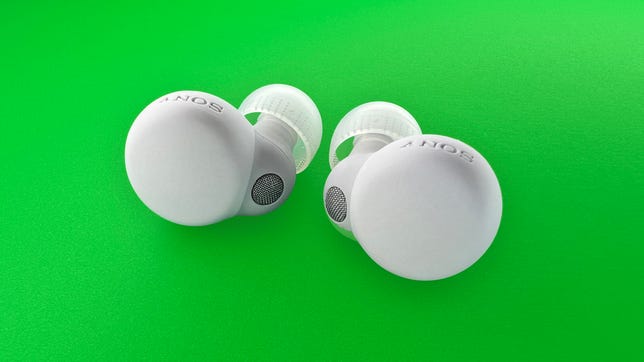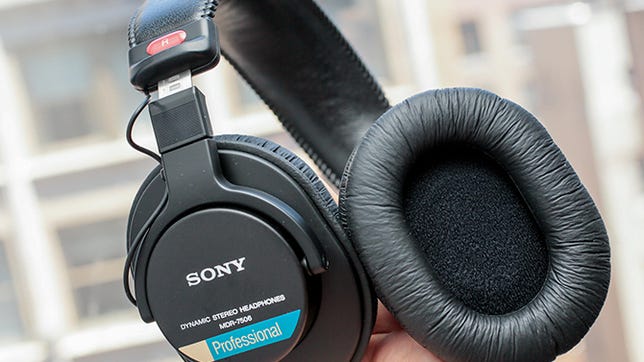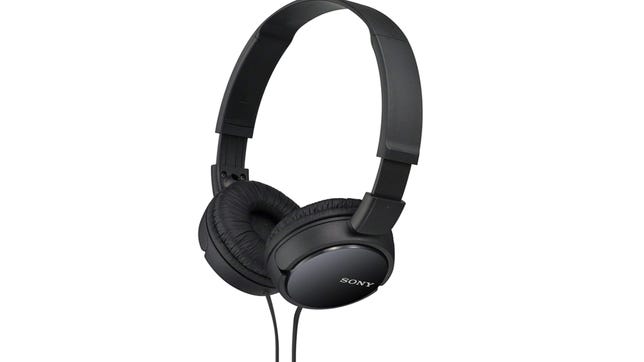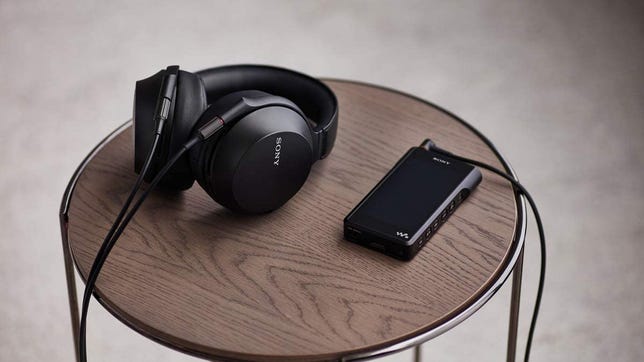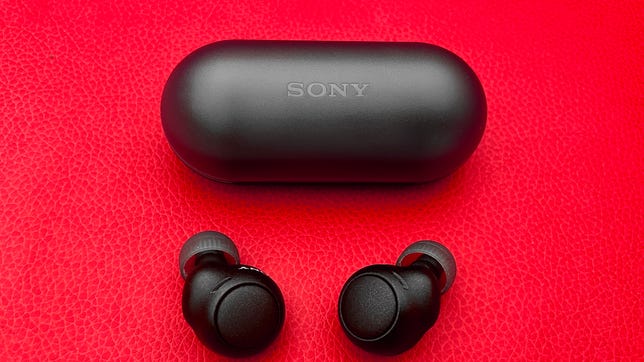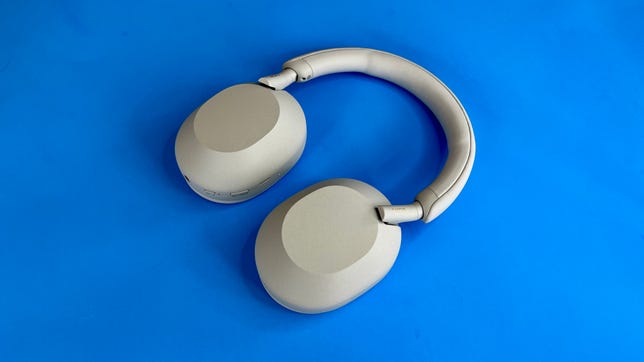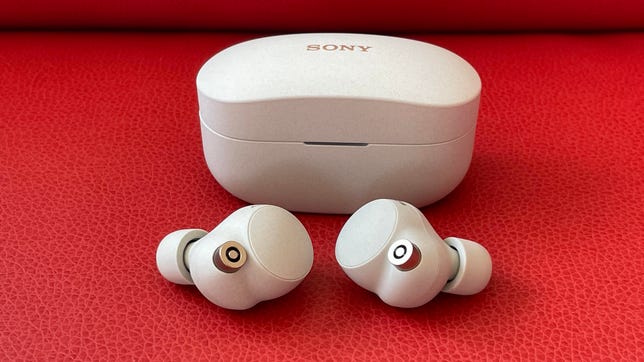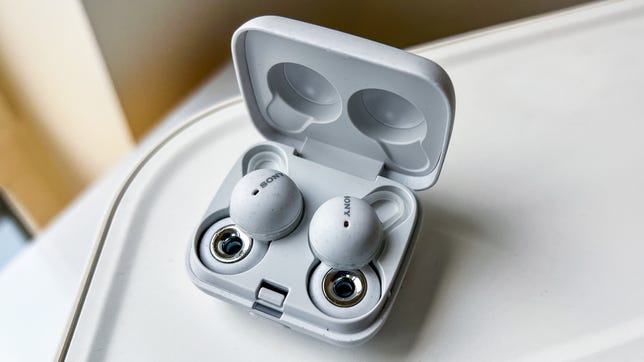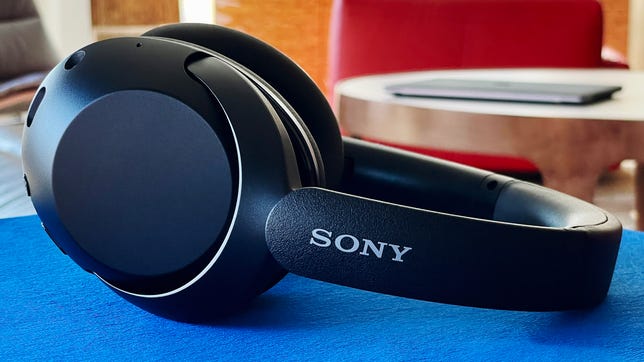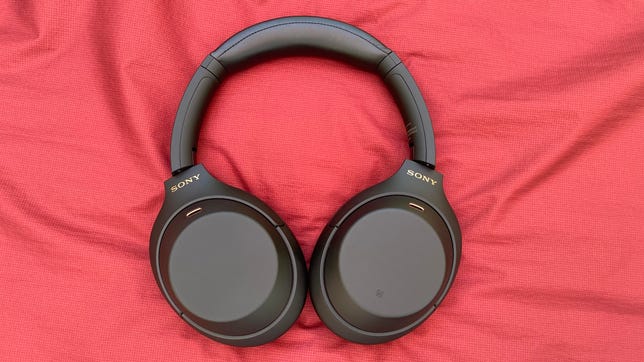Technologies
Sony Headphone Deals: Prices on New Headphones Start at $10
We’ve compiled some of the top bargains currently available on Sony headphones and earbuds.

There are a ton of headphone options out there, and finding a quality pair can feel like looking for a needle in a haystack sometimes, with so many unknown brands on Amazon and $10 pairs up for grabs at your local gas station. It’s never an enjoyable experience to spend any amount of money on headphones or earbuds that let you down.
Long a respected brand in the audio market, Sony makes some of the most popular headphones with a line that runs the gamut from premium noise-canceling, over-ear models to inexpensive on-ear headphones to excellent true-wireless earbuds in a variety of price ranges.
Like with all headphones, prices for Sony headphones tend to fluctuate and throughout the year you’ll find discounts on most Sony models — and sometimes pretty major discounts. While we can’t keep track of all the deals on Sony headphones (there are a lot), we’ve put together a list of current deals and pricing for the most popular — and best — of them. We also have lists of the best deals on Beats headphones and best AirPods deals in case you’re interested in those brands’ earbuds and headphones.
Read more: Best Wireless Earbuds for 2023
David Carnoy/CNET
Unlike the «open» LinkBuds, the LinkBuds S are traditional noise-isolating earbuds with tips you jam in your ears. They’re more compact and lighter than Sony’s flagship WF-1000M4 and also feature Sony’s V1 processor. While their sound and noise canceling don’t quite measure up to the WF-1000XM4’s, they’re close and cost less. They’re the Sony buds for people who can deal with larger buds but want 80 to 85% of those buds’ features and performance for significantly less.
All-time low: $128.
Sarah Tew/CNET
Introduced way back in 1991 (!), the Sony MDR-7506 has long been a favorite headphone of recording engineers and other sound professionals (yes, these are wired headphones). The origins of its design date even further back, since the MDR-7506 headphones are, in fact, a refresh of the Sony MDR-V6 that rolled out in 1985. Both models were designed for the pro sound market, but remain hugely popular with consumers.
While the two models have the same design and are very comfortable, they don’t sound identical. Both offer very well-balanced sound and excellent clarity for their modest prices — and both are great overall values. But the MDR-V6 headphones make a little more bass and sound more laid-back and mellow, while the 7506 headphones are leaner with a more accentuated treble range, which makes the sound a little crisper and livelier.
All-time low: $70.
Sony
If you’re looking for a cheap on-ear wired headphone, the ZX Series is as good a bet as any. It costs $10 — or $20 for the version with a microphone.
All-time low: $10
Sony
The Sony MDR-Z7M2 may not be the flagship audiophile headphone in Sony’s lineup (that would be MDR-Z1R), but it’s still a high-end model that lists for $900 but has been on sale for $600. I reviewed the earlier version of the Z7 (the M2 at the end stands for Mark 2, or second generation) and it sounded great and was comfortable. To be clear, this is an audiophile headphone and sounds best with the right audio equipment, which may include a headphone amplifier or a high-resolution portable music player (notice the Sony Walkman player, which isn’t included, in the photo).
All-time low: $570
David Carnoy/CNET
While the C500’s design sensibility has more in common with the high-end WF-1000XM4 than their predecessor, the WF-XB700 Extra Bass, the C500 is not a noise-canceling model and is pretty basic as far as earbuds go, with no ear-detection sensors or transparency mode. But the buds are compact, lightweight, fit comfortably and sound good for an entry-level model. Read our Sony C500 first take.
All-time low price: $58
David Carnoy/CNET
When you have a product that a lot of people love, change can be risky. Such is the case for Sony’s WH-1000XM5, the fifth generation of the 1000X series headphones, which were first released in 2016 as the MDR-1000X Wireless and have become increasingly popular as they’ve improved with each generation. Over the years, Sony has made some tweaks to the design, but nothing as dramatic as what it’s done with the WH-1000XM5. Other than the higher $400 price tag ($50 more than the WH-1000XM4), most of those changes are good, and Sony’s made some dramatic improvements with voice-calling performance as well as even better noise canceling and more refined sound.
All-time low price: $292
Sony
The WH-CH710N is Sony’s entry-level noise-canceling headphones. At their list price of $148, they’re grossly overpriced, but a lot more compelling when they go on sale, which they often do (look for them for less than $100 or ideally at $78, their low price). The set’s sound and noise-canceling features are a big step below what you get with the WH-1000XM4, but these are overall competent headphones that are lightweight and comfortable to wear. In other words, this pair is far from the best but it’s a good choice if you can’t afford something higher-end. No carrying case is included.
All-time low price: $78
David Carnoy/CNET
No earbuds are perfect and not everybody will love the fit of the Sony WF-1000XM4 buds or be able to afford their high price. But if you’re looking for great-sounding earbuds with excellent noise canceling, solid voice-calling capabilities and good battery life, these buds check all the boxes. And unlike the earlier WF-1000XM3, these are water-resistant with an IPX splash-proof rating.
Bose’s QuietComfort Earbuds also have top-notch noise canceling and sound quality, but the Sony is right there with the Bose for noise canceling. Some might even say it’s a touch better in that department. The Sony offers better sound quality and has a more compact design, particularly for the case — though the Sony buds certainly aren’t small.
All-time low price: $180
David Carnoy/CNET
The LinkBuds are, in a sense, Sony’s answer to Apple’s standard AirPods. While they don’t sound as good as Sony’s flagship WF-1000XM4 noise-isolating earbuds, they offer a discreet, innovative design and a more secure fit than the AirPods, as well as good sound and very good voice-calling performance.
Like the third-gen AirPods, their open design allows you to hear the outside world — that’s what the ring is all about. That makes them a good choice for folks who want to hear what’s going around them for safety reasons or just don’t like having ear tips jammed in their ears. They also have a few distinguishing extra features, including Speak to Chat and Wide Area Tap. Instead of tapping on a bud, you can tap on your face, just in front of your ear, to control playback.
They’re IPX4 splash-proof and thanks to their fins — Sony calls them Arc Supporters — they lock in your ears securely and work well for running and other sporting activities.
All-time low price: $128.
David Carnoy/CNET
As for the WH-XB910N, this is the step-down model from the WH-1000XM4. It’s an Extra Bass model, so it does have a preponderance of bass. This updated version looks the earlier XB900N but offers improved noise canceling and multipoint Bluetooth pairing, so you can pair it with your phone and computer simultaneously. It also supports Sony’s LDAC audio codec. It often sells for around $150 or slightly less. At that price, it’s a decent value.
While improved, the noise canceling isn’t quite up to the level of the WH-1000XM4. And the WH-XB910N doesn’t have some of that model’s extra features, such as Speak to Chat, wearing detection sensors and Sony’s Precise Voice Pickup technology. However, it does have a Quick Attention Mode, which allows you to put your hand over the ear cup to go from noise canceling to an ambient-aware transparency mode. Also, this headphone now comes with a hard case like the WH-1000XM4. Battery life is rated at up to 30 hours at moderate volume levels — that’s the same as what you get from the WH-1000XM4.
All-time low price: $123
David Carnoy/CNET
While they’re no longer Sony’s flagship noise-canceling headphones, the WH-1000XM4 are still very good headphones and worth considering if you can find them at a big discount.
All-time low price: $248.
How we test headphones at CNET
We test headphones based on five key criteria, comparing similarly styled and priced models. These criteria include design, sound quality, features, voice-calling performance and value.
Evaluating design, we assess not only how comfortable the headphones or earbuds fit (ergonomics) but their build quality and how well the controls are implemented. For earbuds, we also look at water- and dust-resistance ratings.
We evaluate sound quality by listening to a set playlist of music tracks and comparing the headphones to top competing products in their price range. Sonic traits such as bass definition, clarity, dynamic range and how natural the headphones sound are key factors in our assessment.
Some great-sounding headphones aren’t loaded with features, but we do take any extra features into account. These include everything from noise-canceling and transparency modes (ambient sound mode) to special sound modes to ear-detection sensors that automatically pause your music when you take the headphones off your ears.
When we test voice-calling performance, we make calls in the noisy streets of New York and evaluate how well the headphones reduce background noise and how clearly callers can hear your voice.
We determine value after evaluating the strength of the earbuds against all these criteria and what the headphone is able to deliver compared to other models in its price class.
More audio recommendations
- Best Cheap True Wireless Earphones
- Best Earbuds for Running for 2023: Bone Conduction and More
- Protect Your AirPods: 5 Cases Under $20
- Best Headphones for 2023: Top Picks for All Styles
- 7 Great AirPods Pro Alternatives That Cost a Lot Less
- Best Cheap Earbuds and Headphones for 2023
- Best Earbuds and Headphones for Working Out for 2023
- Best Headset for Working From Home in 2023
- Best Soundbars for 2023
- 5 True Wireless Earbuds Worth Buying for Under $40
- Best AirPods Max Accessories for 2023
Technologies
Today’s NYT Strands Hints, Answers and Help for Jan. 8 #676
Here are hints and answers for the NYT Strands puzzle for Jan. 8, No. 676.
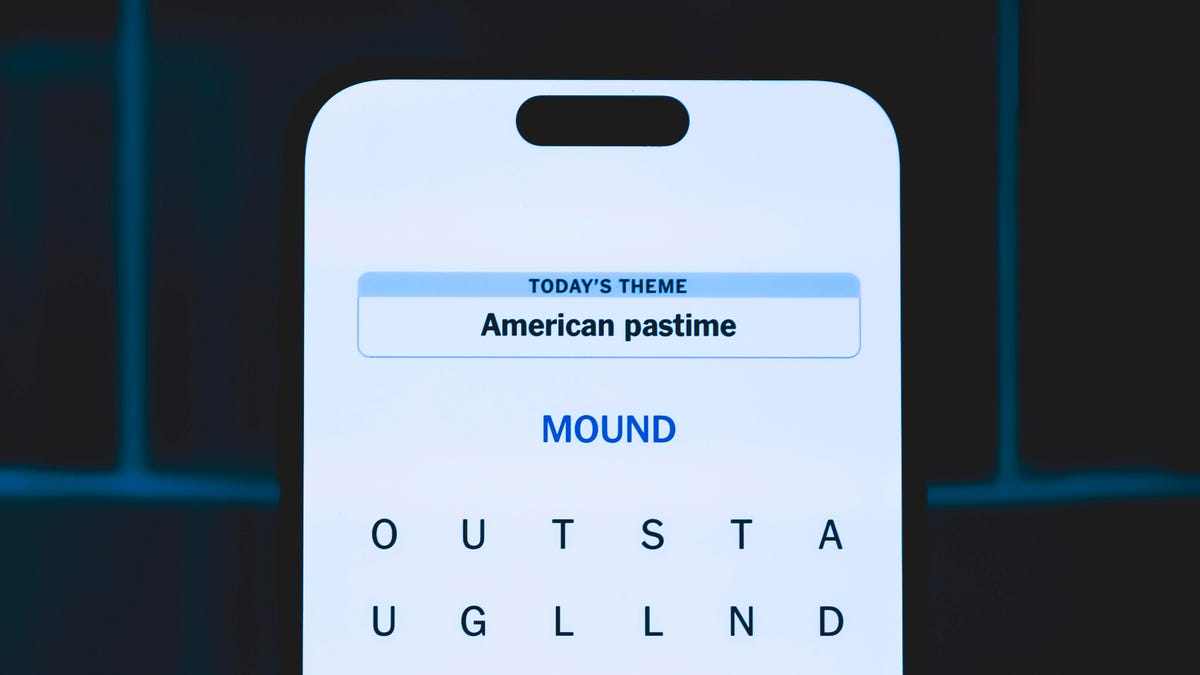
Looking for the most recent Strands answer? Click here for our daily Strands hints, as well as our daily answers and hints for The New York Times Mini Crossword, Wordle, Connections and Connections: Sports Edition puzzles.
Today’s NYT Strands puzzle was almost impossible for me, because it’s all focused on a certain TV show that I have never watched and barely know anything about. (Its fourth season premieres today, if you want to check it out.) If you’re like me, you need hints and answers, so read on.
I go into depth about the rules for Strands in this story.
If you’re looking for today’s Wordle, Connections and Mini Crossword answers, you can visit CNET’s NYT puzzle hints page
Hint for today’s Strands puzzle
Today’s Strands theme is: That’s just reality (TV)
If that doesn’t help you, here’s a clue: Show with plenty of trickery.
Clue words to unlock in-game hints
Your goal is to find hidden words that fit the puzzle’s theme. If you’re stuck, find any words you can. Every time you find three words of four letters or more, Strands will reveal one of the theme words. These are the words I used to get those hints but any words of four or more letters that you find will work:
- SIDE, HIDE, START, TART, FAITH, TENS, BANS, FATE, SILT, CAST, TRAIT
Answers for today’s Strands puzzle
These are the answers that tie into the theme. The goal of the puzzle is to find them all, including the spangram, a theme word that reaches from one side of the puzzle to the other. When you have all of them (I originally thought there were always eight but learned that the number can vary), every letter on the board will be used. Here are the nonspangram answers:
- CASTLE, SHIELD, MISSION, FAITHFUL, BANISHMENT
Today’s Strands spangram
Today’s Strands spangram is THETRAITORS. To find it, start with the T that’s three letters down on the far-left row, and wind across and then down.
Don’t miss any of our unbiased tech content and lab-based reviews. Add CNET as a preferred Google source.
Technologies
Today’s NYT Connections: Sports Edition Hints and Answers for Jan. 8, #472
Here are hints and the answers for the NYT Connections: Sports Edition puzzle for Jan. 8, No. 472.
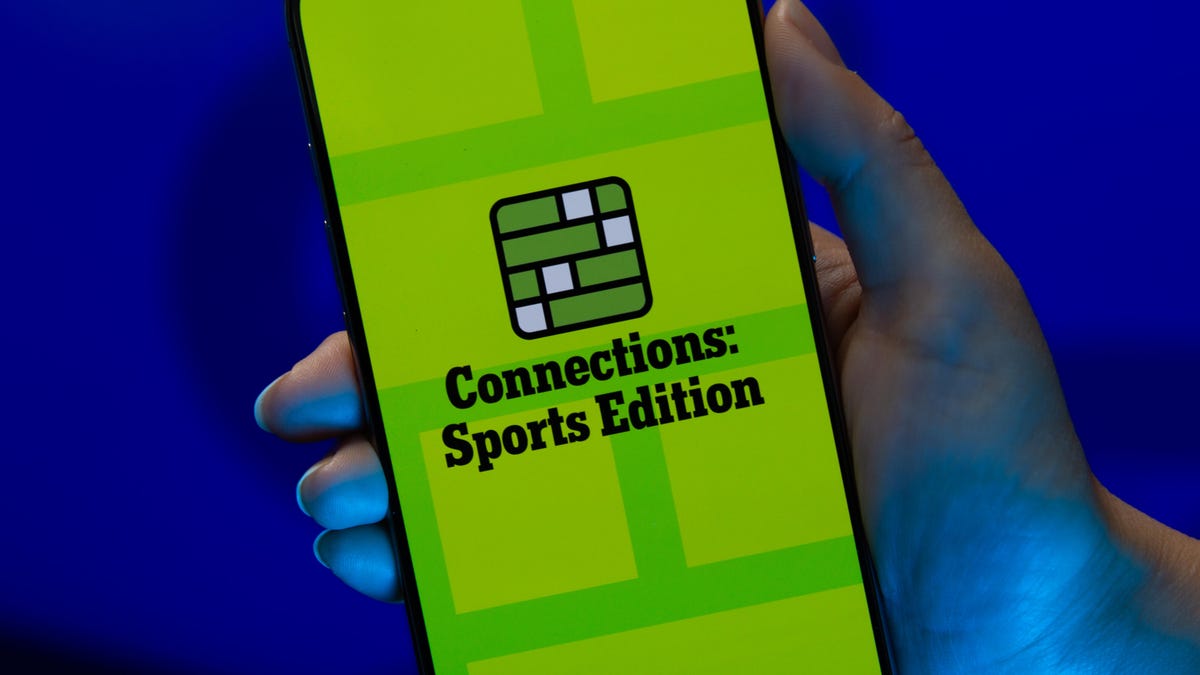
Looking for the most recent regular Connections answers? Click here for today’s Connections hints, as well as our daily answers and hints for The New York Times Mini Crossword, Wordle and Strands puzzles.
Today’s Connections: Sports Edition was a bit of a stumper, though if you recognize famous-athlete names, you might get the purple category right away. And you might have never heard of the blue category topic. (That link is a big spoiler.) If you’re struggling with today’s puzzle but still want to solve it, read on for hints and the answers.
Connections: Sports Edition is published by The Athletic, the subscription-based sports journalism site owned by The Times. It doesn’t appear in the NYT Games app, but it does in The Athletic’s own app. Or you can play it for free online.
Read more: NYT Connections: Sports Edition Puzzle Comes Out of Beta
Hints for today’s Connections: Sports Edition groups
Here are four hints for the groupings in today’s Connections: Sports Edition puzzle, ranked from the easiest yellow group to the tough (and sometimes bizarre) purple group.
Yellow group hint: Sports in our nation’s capital.
Green group hint: Got any Band-Aids?
Blue group hint: Certain basketball league.
Purple group hint: Same first name.
Answers for today’s Connections: Sports Edition groups
Yellow group: A DC athlete.
Green group: Supplies for an athletic trainer.
Blue group: Unrivaled teams.
Purple group: Jerry ____.
Read more: Wordle Cheat Sheet: Here Are the Most Popular Letters Used in English Words
What are today’s Connections: Sports Edition answers?
The yellow words in today’s Connections
The theme is a DC athlete. The four answers are Capital, Commander, Mystic and Wizard.
The green words in today’s Connections
The theme is supplies for an athletic trainer. The four answers are bandages, ice pack, scissors and tape.
The blue words in today’s Connections
The theme is Unrivaled teams. The four answers are Breeze, Laces, Phantom and Vinyl.
The purple words in today’s Connections
The theme is Jerry ____. The four answers are Lucas, Rice, Stackhouse and West.
Don’t miss any of our unbiased tech content and lab-based reviews. Add CNET as a preferred Google source.
Technologies
Today’s NYT Mini Crossword Answers for Thursday, Jan. 8
Here are the answers for The New York Times Mini Crossword for Jan. 8.

Looking for the most recent Mini Crossword answer? Click here for today’s Mini Crossword hints, as well as our daily answers and hints for The New York Times Wordle, Strands, Connections and Connections: Sports Edition puzzles.
Need some help with today’s Mini Crossword? I found 6-Across to be especially tricky. Read on for all the answers. And if you could use some hints and guidance for daily solving, check out our Mini Crossword tips.
If you’re looking for today’s Wordle, Connections, Connections: Sports Edition and Strands answers, you can visit CNET’s NYT puzzle hints page.
Read more: Tips and Tricks for Solving The New York Times Mini Crossword
Let’s get to those Mini Crossword clues and answers.
Mini across clues and answers
1A clue: Donate
Answer: GIVE
5A clue: Piece of equipment in curling or Quidditch
Answer: BROOM
6A clue: Tidbit of information
Answer: DATUM
7A clue: Prone to daydreaming
Answer: SPACY
8A clue: Athletic shorts fabric
Answer: MESH
Mini down clues and answers
1D clue: Flavor of a purple lollipop
Answer: GRAPE
2D clue: Greek letter I’s
Answer: IOTAS
3D clue: Go to bat (for)
Answer: VOUCH
4D clue: Award with Daytime and Primetime categories
Answer: EMMY
5D clue: Erotic practice in «Fifty Shades of Grey,» for short
Answer: BDSM
Don’t miss any of our unbiased tech content and lab-based reviews. Add CNET as a preferred Google source.
-

 Technologies3 года ago
Technologies3 года agoTech Companies Need to Be Held Accountable for Security, Experts Say
-

 Technologies3 года ago
Technologies3 года agoBest Handheld Game Console in 2023
-

 Technologies3 года ago
Technologies3 года agoTighten Up Your VR Game With the Best Head Straps for Quest 2
-

 Technologies4 года ago
Technologies4 года agoBlack Friday 2021: The best deals on TVs, headphones, kitchenware, and more
-

 Technologies4 года ago
Technologies4 года agoGoogle to require vaccinations as Silicon Valley rethinks return-to-office policies
-

 Technologies4 года ago
Technologies4 года agoVerum, Wickr and Threema: next generation secured messengers
-

 Technologies4 года ago
Technologies4 года agoOlivia Harlan Dekker for Verum Messenger
-

 Technologies4 года ago
Technologies4 года agoiPhone 13 event: How to watch Apple’s big announcement tomorrow

